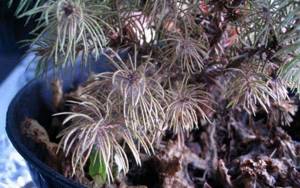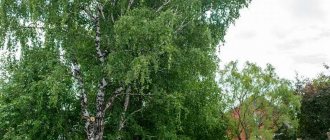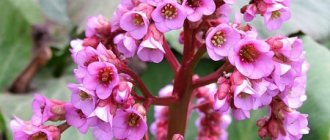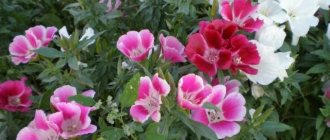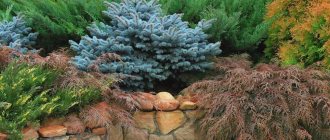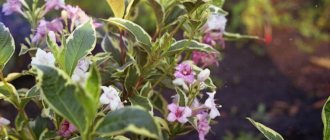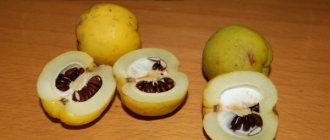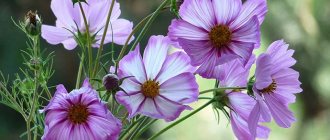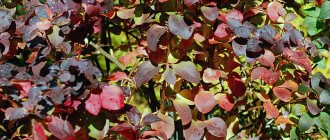9202
Evergreen coniferous plants look presentable both in the summer heat and in the winter cold, so owners of suburban areas always try to purchase them. Canadian spruce Konika is a favorite conifer, which has become popular due to its dwarf forms and fluffy branches. This long-liver can grow in one place for up to half a century, so even great-grandchildren will have time to admire its beauty and solidity.
The miniature tree is valued for its beautiful cone-shaped crown, which does not require additional shaping. If you look at photos in catalogs, you can clearly see what a colorful look a Christmas tree creates in the garden at any time of the year. It combines with many plants, but also looks decent alone.
Purchasing spruce in a tub
Today, most people are of the opinion that it is necessary to take measures to preserve green spaces and prefer to buy a live spruce in a pot for the New Year.
Based on its description, the Canadian conika spruce is an ideal option for a New Year's tree. Here are some recommendations:
- Do not place the pot next to the radiator.
- The best place for a Christmas tree is partial shade or shade.
- If you decide to place the plant in a heated room, then do not forget about regular spraying.
- Place a container of water next to the spruce - it loves moist air.
- After the New Year, place the tree in a cool place with a temperature no higher than 10°C (this can be a loggia or balcony). Cover with a piece of burlap and some kind of insulation. This is the only way it will survive until spring.
- A spruce tree can live in a pot for 3-4 years, after which it is better to plant it in open ground.
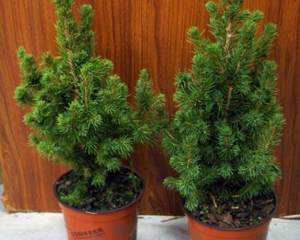
Landing
In order for this coniferous tree to take root as much as possible near your country house, in a small park or garden, the following planting conditions must be observed:
- choose a slightly darkened place for the dwarf spruce, because due to constant exposure to the sun it will definitely burn;
- there should be no strong wind or constant draft in the landing area;
- often spruce dies in early spring, when it is flooded with a large amount of melt water, so this planting criterion should be provided from the very beginning in order to protect its green beauty;
- Landing is allowed at any time of the year, even during a warm winter. However, it is better to do this in spring or autumn in cool weather with minimal exposure to sunlight - this way there is less risk that the tree will not take root;
- It will be easier for this coniferous tree to take root in new soil if pleasant cool conditions are created for it during the first seven days of planting;
- It is recommended to water the Konica spruce at least twice a week, 10 liters per plant trunk;
- It is strictly forbidden to plant a tree in wetlands or land with a high groundwater level.
Planting Konika spruce in the city is strictly prohibited, because the polluted air of the metropolis has an extremely detrimental effect on its crown, causing various tree diseases. In the worst case, the tree may die.
It will also be possible to achieve the goal of normal plant rooting by properly preparing the soil:
- It should be well dug and light.
- When planting a Canadian spruce from a pot, you need to thoroughly remove all the soil from the roots. This needs to be done because quite often trees are sold in soil that is practically devoid of substances beneficial to the plant. Ideally, the soil for spruce should consist of the following components: turf and leaf soil, peat and sand (it is important to maintain a ratio of 2:2:1:1, respectively).
- If this plant is being transplanted from good soil, it is necessary to dig it out with a clod of earth, which will preserve the structure and condition of the roots, most of which are located close to the surface of the earth.
- The soil should be further enriched with special organic materials: up to 80 g of broad-spectrum long-lasting fertilizer for coniferous plants, as well as a bucket of well-rotted manure.
- Add compost and soil to clay or sandy soil.
- It is necessary to prevent the evaporation of moisture; to do this, the soil around the spruce needs to be mulched with peat with a layer of 50-70 mm.
It is strictly forbidden to keep Konika spruce at home, as it often begins to hurt and dry out.
If you keep the spruce indoors, the temperature in the room should not be higher than 15°C, and you cannot do without constantly spraying the plant and humidifying the air.
Conica, Echiniformis and Pendula
Conica is considered the most popular conical shape. Over half a century, its height can reach four meters, and its crown is dense, pyramidal and has a diameter of about 2 meters. Konika was first discovered in Canada in 1904 and from there it spread to parks and gardens around the world.
Propagation by cuttings, recommended for growing in containers on terraces and roofs. In nurseries, the most common pests that cause damage are red spiders.
Spruce looks spectacular in a variety of compositions:
- In group plantings;
- Parterre.
Since it is shade-tolerant, it is recommended for decorating rocky gardens. Plantings can also be single.
The Echiniformis species is a mini form that grows very slowly. This decorative form can only grow half a meter in 30 years.
The tree's shoots are very short, the buds are brown, the needles are blue and narrow. This species is very light-loving and loves slightly acidic soils. It began to be cultivated in 1955 in France and is sometimes confused with another variety - black. If you look at it in photographs, you can appreciate how beautiful it looks on rocky hills.
Spruce Glauka Pendula is a weeping form and was found by scientist A. Quarry in the Versailles Park. The plant has strongly drooping branches, on which needles are densely located. These trees have abundant branching and spherical leaf tips.
Best Places for Canadian Spruce
Konica is famous for its high decorative value, so it is best to plant it:
- in the recreation area;
- in front of the façade of the main building;
- on the children's playground.
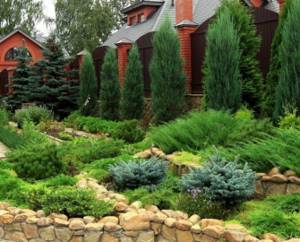
Moreover, the tree can form either an independent composition or be part of a general ensemble.

Japanese quince: description of the plant, features of planting and care. 100 photos and videos of applications for decorating an ornamental garden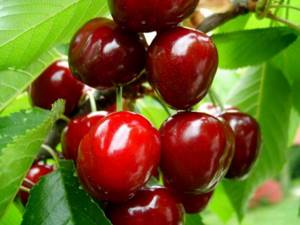
Where cherries grow - conditions for the maintenance and growth of the tree. Tips for choosing a place on the site and choosing neighbors for cherries (145 photos)
- Poplar tree: description of the main types and beneficial properties of the tree. Tips for choosing a place for planting and care features (110 photos and videos)
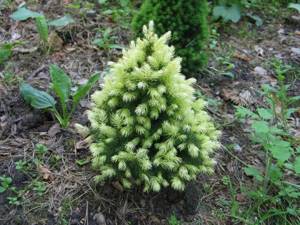
Description of the species
The shape of these trees is mostly conical, but there are also spherical representatives of this species. The needles are bright, green, gray, blue, and also come with white young growths. It is usually short, hard, and prickly. A tree that grows in the wild can reach 15–18 m in height, but the size of cultivated varieties is much smaller - up to a maximum of 2 m.

Diseases
Konica is susceptible to the following diseases:
- rust;
- Schutte's disease.
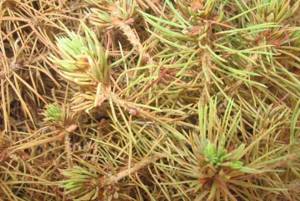
For treatment, it is necessary to timely treat the tree with appropriate preparations. Delay can lead to the death of the spruce.

If you are planning to do landscaping at your summer cottage, then you should definitely take a closer look at the Canadian spruce. It is difficult to find such an unpretentious and beautiful tree. Therefore, konica is an ideal choice.
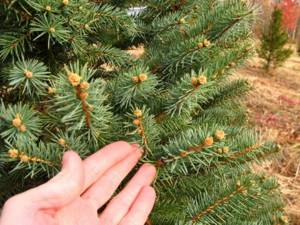
Reproduction
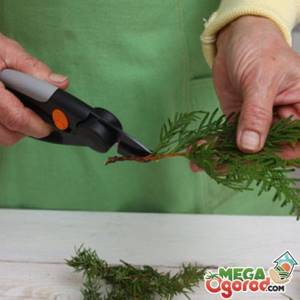
Canadian conike propagates using cuttings and seeds. The cutting process is carried out in the spring:
- Young, healthy branches are selected and separated from the trunk along with a piece of it, the so-called heel.
- The cutting process is carried out in cloudy weather.
- Trees are selected at an average age of 5 to 10 years; branches must be cut from the middle of the crown.
- One cutting should be approximately 7-11 cm in length. It is separated with a sharp downward movement so that some wood and bark of the mother plant remain on it.
- After preparing the material, all cuttings are kept in a stimulating solution for 20-25 hours.
- The cuttings are immersed in previously prepared loose, fertile and light soil to a depth of 2-3 cm. It is recommended to plant them at an angle to the ground of 30 degrees.
- The container with seedlings is placed in a greenhouse. After a while, young shoots should appear, after which the rooting process begins. It lasts for approximately 6 months. In some cases, the root system appears only the next year.
- Plantings must be maintained regularly. Ventilate and water, sometimes adding stimulating components to the water.
- The soil should not completely dry out in the container, but it is also not recommended to allow waterlogging.
For propagation using seeds, the source material can be purchased at a special store or collected well-opened, ripened cones in the winter. Seeds must be prepared for planting by treating them with disinfectant and stimulating solutions. After this, they are sown shallowly in a special container with loose and fertile soil.
Canadian spruce Konica growing at home
Treatment against pests and diseases
It is very important immediately after the purchase (gift) or a little later. But be sure to treat Konica against pests even in winter, that is, before spring.
Do green aphids often sit dormant on spruce trees during the winter months? Which can eat all the needles in a month. On those shoots where aphids have visited, the needles turn yellow and fall off. A weak Aktara solution can help in the fight against aphids. We pour under the roots and over the needles or other similar insecticides. A day after treatment, you need to shake the tree. So that all dried harmful insects fall out of it. Green aphids are a very insidious pest because they are very small in size and blend in with the pine needles. You can detect it only if you look closely (for example, with a magnifying glass) - the aphids have reddish-brown eyes.
If you notice a white coating on the needles, you know it’s Hermes. To combat this pest, the following drugs should be used.
Aktara, Fitoverm, Konfidor, Iskra, Fufanon and similar.

Sometimes white mycelium may appear on the lower shoots, which indicates the presence of a fungal disease such as snow shute. To combat it, you will need to treat it with copper-containing preparations (fungicides), for example, Oxyx, Khom or copper sulfate (1%). After treatment, it is advisable to cover the plant with a plastic bag and keep it there for a while.
